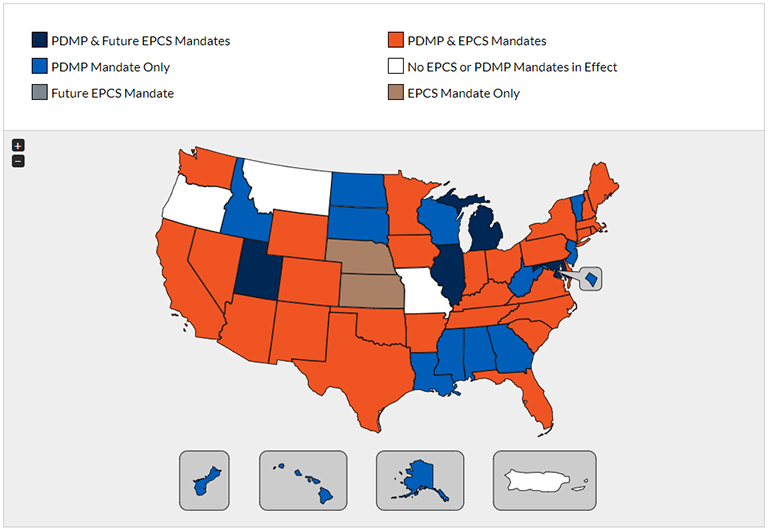
12 Dec Benefits of Eye Care E-Prescribing & Medication Adherence Tools
E-Prescribing (electronic prescribing) and medication adherence tools give optometrists and ophthalmologists quick access to medication history data and advanced clinical, behavioral, and financial support tools.
Did you know that over 25% of prescriptions never get picked up by patients? While many optometry and ophthalmology EHRs offer integrated e-Prescribing solutions, there are several important reasons why your EHR should include medication history and adherence tools, as well as bi-directional e-prescribing features.
Let’s take a closer look at e-prescribing advantages and reasons for medication non-adherence among patients.
Common Advantages of E-Prescribing
- Access patient medication history, current formulary information and receive alerts for drug-drug, drug-allergy, dosing, and duplicate therapy interactions.
- Identify and guide patients at risk for medication non-adherence with medication adherence and behavioral support tools and resources.
- Securely write and submit regulatory-compliant, digitally-signed prescriptions for legend drugs to pharmacies from any desktop, laptop, or mobile device. Pharmacists don’t have to interpret handwritten prescriptions, reducing potential errors. Legend drugs are prescription drugs approved by the FDA and prescribed by a licensed provider.
- Electronically prescribe controlled substances (Schedules II–V). Starting January 1, 2023, electronic prescribing for controlled substances (EPCS) is required for Medicare Part D and Medicare Advantage prescription drug plans. In addition, most states have mandated using EPCS for all controlled substances.
Pro Tip: DrFirst® Rcopia, First Insight’s e-prescribing award-winning partner, provides an interactive map and a complete state mandates list for EPCS and prescription drug monitoring programs (PDMP).
Image provided by DrFirst®
Reasons for Medication Non-Adherence Among Patients
While e-prescribing in the United States continues to increase yearly, prescription abandonment is still a widespread problem. Key barriers to prescription abandonment are economic (cost), clinical (education), and behavioral (taking action). Below are six common reasons patients don’t take their prescribed medications.
- Don’t understand the need for the medication.
- Don’t understand how to take the medication.
- Don’t understand the potential side effects.
- Forget to take the medication.
- Can’t afford the medication due to high out-of-pocket costs.
- Have personal beliefs against taking medication.
Engaging patients at the right time with actionable electronic prescribing and medication adherence support can reduce prescription abandonment by up to 20%. For instance, research shows that glaucoma patients who consistently took prescribed glaucoma medication were less likely to develop vision loss due to glaucoma.
Related: 7 Ways E-Prescribing Improves Eye Care Medication Adherence
Choose an Eye Care EHR with Two-Way E-Prescribing
A successful EHR and practice management system installation starts by understanding your objectives. By learning about your current challenges and required workflows, we’ll create a detailed project plan that walks you through implementation, system and hardware requirements, optional office modifications, and performance measurements.
Request more information to see how MaximEyes.com EHR software and other practice management business tools offer the support you need to run an efficient and profitable practice so you can focus on your patients.
Current MaximEyes Customers Only: Email sales@first-insight.com or call 800.920.1940, ext. 6659, for more information on how to add electronic prescribing and medication adherence tools to your MaximEyes and MaximEyes.com EHR system.






